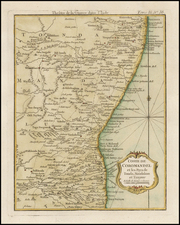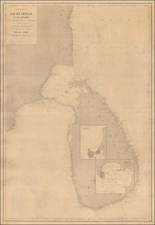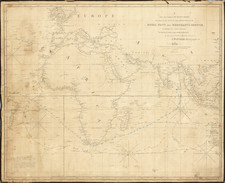An attractive birdseye view of this historically strategic city.
In the span of two centuries, Goa emerged as a critical node in global trade networks and a bastion of colonial power. In 1510, Admiral Afonso de Albuquerque seized Goa from the Bijapur Sultanate, establishing it as a strategic outpost for the Portuguese. This conquest gave Portugal a dominant position in the lucrative spice trade, and a direct gateway to the Indian subcontinent.
Throughout the 16th century, Goa flourished as a global trading hub. Ships from Europe, Africa, and Asia crowded its harbors, exchanging spices, textiles, and precious stones. As the "Rome of the East," it overshadowed even Lisbon in terms of opulence. By the late 1600s, Goa's influence began diminishing. The rise of alternative trade routes and nearby ports, especially Bombay, coupled with internal challenges and the persistent threat from the Marathas, marked the onset of its decline.
From Mallet's monumental Description de l' Univers, first published in Paris in 1683, perhaps the greatest work of its kind in the 17th Century.
Alain Mannesson Mallet (1630-1706) was a French mapmaker and engineer who served in the armies of Louis XIV. After rising through the ranks, Mallet was appointed as Inspector of Fortifications, a job which also required mathematical skills and which made him a competent military engineer. Eventually, he joined the court of Louis XIV at Versailles, where he taught math and focused on writing.
Mallet is best known for his Description de L’Univers, first published in 1683, in five volumes. A wide-ranging geographical work, the Description included textual descriptions of the countries of the world, as well as maps of the celestial sky and the ancient and modern worlds. The Description continued to be published until the early eighteenth century. He also published a work in three volumes on warfare (1684) and a primer on geometry (1702).













![[ India ] Presqu Isle De L'Inde Decale Golfe De Bengala](https://storage.googleapis.com/raremaps/img/small/97365.jpg)
![(Puducherry) Plan De La Ville De Pondicheri Dedie A La Memoire De Mr. Dupleix . . . 1748 . . . [Plan of the City of Pondicherry Dedicated to the Memory of Mr. Dupleix... 1748...]](https://storage.googleapis.com/raremaps/img/small/95813.jpg)